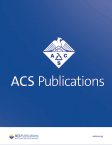Abstract PS01-08: Management of ipsilateral breast tumor recurrence following breast conservation surgery for ductal carcinoma in situ – a data-free zone
IF 2.9
Q2 PUBLIC, ENVIRONMENTAL & OCCUPATIONAL HEALTH
引用次数: 0
Abstract
Background: Breast-conserving surgery (BCS) is well established for the management of ductal carcinoma in situ (DCIS). Although a growing body of data support re-conservation therapy (RBCS) for ipsilateral breast tumor recurrence (IBTR) following BCS in invasive cancer, neither randomized trials nor guidelines address management of IBTR following BCS for DCIS. Here we aim to compare the outcomes of mastectomy vs RBCS for a large series of DCIS patients with IBTR. Methods: We identified women treated with BCS for DCIS at MSKCC who developed IBTR as a first event. Between those treated with mastectomy vs RBCS, we compared the clinicopathologic characteristics for the initial and recurrent tumors, the use of adjuvant RT (both upfront (“primary RT”) and post IBTR (“secondary RT”)) and/or tamoxifen, the rate of third events (local, regional, distant), breast cancer specific (BCSS) and overall survival (OS). Results: From our service databases among 3001 women treated with BCS for DCIS (1978-2010), we found 383 who developed an IBTR as a first event and were treated at our institution between 1983-2023, 186 (49%) with RBCS and 197 (51%) with mastectomy. RBCS was more frequent over time and comprised 56% of patients treated between 2014 and 2023. Among those treated with mastectomy, the initial tumors were significantly more likely to have necrosis (74% vs 59%), high grade (47% vs 28%), comedo histology (38% vs 20%), and to have received primary RT at the time of BCS (61% vs 21%). Between those who underwent mastectomy vs RBCS, there were no significant differences in disease-free interval, in the pathologic characteristics of their IBTR, or in the proportion of invasive vs in situ disease. For patients treated with RBCS, 11 (5.9%) received both primary and secondary RT and 77 (41.3%) received neither (Table 1a). For patients treated with a mastectomy only 8.5% had secondary RT (Table 1b). At a median follow-up of 5.1 years post-IBTR, third local events in total were more frequent for RBCS vs mastectomy (16.1% vs 3.0%, 0.001), but there were no differences in BCSS or OS. Among RBCS patients, third local events (breast re-recurrence) were least frequent among those who received primary and secondary RT, and comparable between with who did vs did not receive secondary RT (16% (13/82) vs 16% (117/104), Table 2). Conclusions: Our data show that for women with isolated IBTR following BCS for DCIS and treated by mastectomy vs RBCS, 1) treatment with mastectomy was associated with less favorable initial pathology and more frequent use of primary RT, 2) re-recurrence was more frequent with RBCS, and 3) BCSS and OS were comparable. In an era of increasing surgical de-escalation, our data suggest a wider role for RBCS and – as for patients having RBCS for IBTR following invasive cancer – further study of the relationship between secondary RT and the rate of third breast events. Citation Format: Brian Diskin, Varadan Sevilimedu, Kimberly Van Zee, Monica Morrow, Hiram Cody. Management of ipsilateral breast tumor recurrence following breast conservation surgery for ductal carcinoma in situ – a data-free zone [abstract]. In: Proceedings of the 2023 San Antonio Breast Cancer Symposium; 2023 Dec 5-9; San Antonio, TX. Philadelphia (PA): AACR; Cancer Res 2024;84(9 Suppl):Abstract nr PS01-08.摘要 PS01-08:导管原位癌保乳手术后同侧乳腺肿瘤复发的处理--无数据区
背景:保乳手术(BCS)是治疗导管原位癌(DCIS)的公认方法。尽管越来越多的数据支持对浸润性癌 BCS 术后同侧乳腺肿瘤复发 (IBTR) 进行再保留治疗 (RBCS),但随机试验和指南均未涉及 DCIS BCS 术后 IBTR 的处理。在此,我们旨在比较乳房切除术与 RBCS 对大量 DCIS IBTR 患者的治疗效果。方法:我们确定了在 MSKCC 接受 DCIS BCS 治疗并首次出现 IBTR 的女性患者。在接受乳房切除术和 RBCS 治疗的患者中,我们比较了初始肿瘤和复发肿瘤的临床病理特征、辅助 RT(前期("一次 RT")和 IBTR 后("二次 RT"))和/或他莫昔芬的使用情况、第三次事件(局部、区域、远处)发生率、乳腺癌特异性(BCSS)和总生存率(OS)。研究结果在我们的服务数据库中,有 3001 名女性因 DCIS 而接受 BCS 治疗(1978-2010 年),我们发现有 383 人在 1983-2023 年间首次出现 IBTR,并在本机构接受了治疗,其中 186 人(49%)接受了 RBCS,197 人(51%)接受了乳房切除术。随着时间的推移,RBCS的发生率越来越高,在2014年至2023年间接受治疗的患者中占56%。在接受乳房切除术的患者中,初始肿瘤坏死(74% 对 59%)、高级别(47% 对 28%)、comedo 组织学(38% 对 20%)以及在 BCS 时接受过初级 RT(61% 对 21%)的几率明显更高。接受乳房切除术的患者与接受RBCS治疗的患者在无病间隔期、IBTR的病理特征或浸润性疾病与原位疾病的比例方面没有明显差异。在接受 RBCS 治疗的患者中,11 人(5.9%)同时接受了一级和二级 RT,77 人(41.3%)没有接受任何一级和二级 RT(表 1a)。接受乳房切除术的患者中,只有 8.5% 接受了二次 RT(表 1b)。在 IBTR 术后 5.1 年的中位随访中,RBCS 与乳房切除术相比,总的第三次局部事件发生率更高(16.1% vs 3.0%,0.001),但 BCSS 和 OS 没有差异。在RBCS患者中,接受一级和二级RT的患者发生第三次局部事件(乳房再复发)的频率最低,接受和未接受二级RT的患者发生率相当(16%(13/82) vs 16%(117/104),表2)。结论我们的数据显示,对于BCS治疗DCIS后孤立性IBTR并接受乳房切除术与RBCS治疗的女性,1)乳房切除术治疗与较差的初始病理相关,且更频繁地使用初级RT;2)RBCS治疗更频繁地复发;3)BCSS和OS相当。在手术升级越来越多的时代,我们的数据表明 RBCS 可以发挥更广泛的作用,对于因浸润性癌症后 IBTR 而接受 RBCS 治疗的患者,我们建议进一步研究二次 RT 与第三次乳腺事件发生率之间的关系。 引用格式:布莱恩-迪斯金、瓦拉丹-塞维利梅杜、金伯利-范泽、莫妮卡-莫罗、海拉姆-科迪。导管原位癌保乳手术后同侧乳腺肿瘤复发的处理--无数据区[摘要]。In:2023 年圣安东尼奥乳腺癌研讨会论文集;2023 年 12 月 5-9 日;德克萨斯州圣安东尼奥。费城(宾夕法尼亚州):AACR; Cancer Res 2024;84(9 Suppl):Abstract nr PS01-08.
本文章由计算机程序翻译,如有差异,请以英文原文为准。
求助全文
约1分钟内获得全文
求助全文
来源期刊

ACS Chemical Health & Safety
PUBLIC, ENVIRONMENTAL & OCCUPATIONAL HEALTH-
CiteScore
3.10
自引率
20.00%
发文量
63
期刊介绍:
The Journal of Chemical Health and Safety focuses on news, information, and ideas relating to issues and advances in chemical health and safety. The Journal of Chemical Health and Safety covers up-to-the minute, in-depth views of safety issues ranging from OSHA and EPA regulations to the safe handling of hazardous waste, from the latest innovations in effective chemical hygiene practices to the courts'' most recent rulings on safety-related lawsuits. The Journal of Chemical Health and Safety presents real-world information that health, safety and environmental professionals and others responsible for the safety of their workplaces can put to use right away, identifying potential and developing safety concerns before they do real harm.
 求助内容:
求助内容: 应助结果提醒方式:
应助结果提醒方式:


